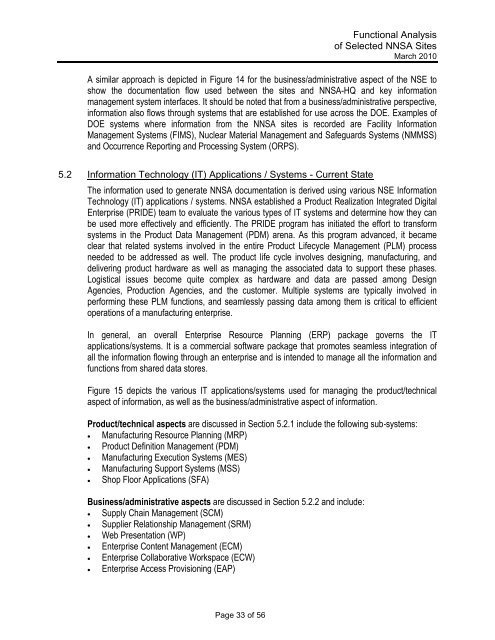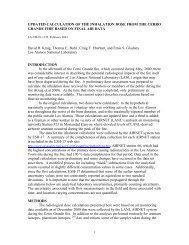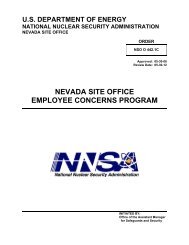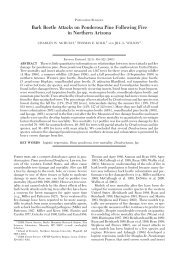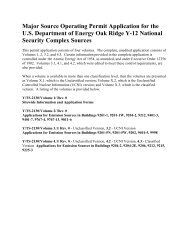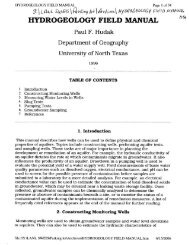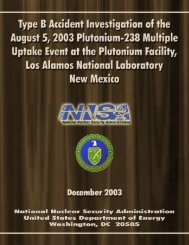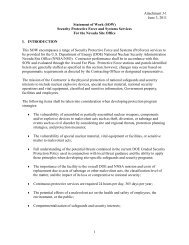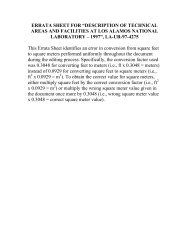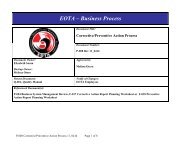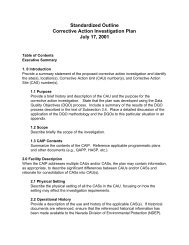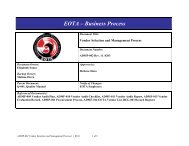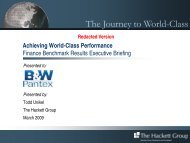Functional Analysis of Selected NNSA Sites - National Nuclear ...
Functional Analysis of Selected NNSA Sites - National Nuclear ...
Functional Analysis of Selected NNSA Sites - National Nuclear ...
You also want an ePaper? Increase the reach of your titles
YUMPU automatically turns print PDFs into web optimized ePapers that Google loves.
<strong>Functional</strong> <strong>Analysis</strong><strong>of</strong> <strong>Selected</strong> <strong>NNSA</strong> <strong>Sites</strong>March 2010A similar approach is depicted in Figure 14 for the business/administrative aspect <strong>of</strong> the NSE toshow the documentation flow used between the sites and <strong>NNSA</strong>-HQ and key informationmanagement system interfaces. It should be noted that from a business/administrative perspective,information also flows through systems that are established for use across the DOE. Examples <strong>of</strong>DOE systems where information from the <strong>NNSA</strong> sites is recorded are Facility InformationManagement Systems (FIMS), <strong>Nuclear</strong> Material Management and Safeguards Systems (NMMSS)and Occurrence Reporting and Processing System (ORPS).5.2 Information Technology (IT) Applications / Systems - Current StateThe information used to generate <strong>NNSA</strong> documentation is derived using various NSE InformationTechnology (IT) applications / systems. <strong>NNSA</strong> established a Product Realization Integrated DigitalEnterprise (PRIDE) team to evaluate the various types <strong>of</strong> IT systems and determine how they canbe used more effectively and efficiently. The PRIDE program has initiated the effort to transformsystems in the Product Data Management (PDM) arena. As this program advanced, it becameclear that related systems involved in the entire Product Lifecycle Management (PLM) processneeded to be addressed as well. The product life cycle involves designing, manufacturing, anddelivering product hardware as well as managing the associated data to support these phases.Logistical issues become quite complex as hardware and data are passed among DesignAgencies, Production Agencies, and the customer. Multiple systems are typically involved inperforming these PLM functions, and seamlessly passing data among them is critical to efficientoperations <strong>of</strong> a manufacturing enterprise.In general, an overall Enterprise Resource Planning (ERP) package governs the ITapplications/systems. It is a commercial s<strong>of</strong>tware package that promotes seamless integration <strong>of</strong>all the information flowing through an enterprise and is intended to manage all the information andfunctions from shared data stores.Figure 15 depicts the various IT applications/systems used for managing the product/technicalaspect <strong>of</strong> information, as well as the business/administrative aspect <strong>of</strong> information.Product/technical aspects are discussed in Section 5.2.1 include the following sub-systems: Manufacturing Resource Planning (MRP) Product Definition Management (PDM) Manufacturing Execution Systems (MES) Manufacturing Support Systems (MSS) Shop Floor Applications (SFA)Business/administrative aspects are discussed in Section 5.2.2 and include: Supply Chain Management (SCM) Supplier Relationship Management (SRM) Web Presentation (WP) Enterprise Content Management (ECM) Enterprise Collaborative Workspace (ECW) Enterprise Access Provisioning (EAP)Page 33 <strong>of</strong> 56


